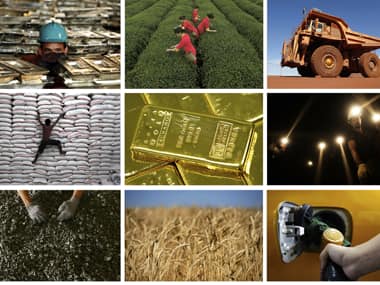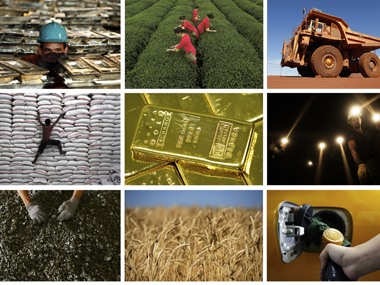The International Monetary Fund (IMF), like its twin the World Bank, has also
lowered the global growth targets for 2015 and 2016
by 0.3 percent in both years. Its new projections are 3.5 percent and 3.7 percent for the two years respectively, while the World Bank’s corresponding forecasts are 3 percent and 3.3 percent. The bright spot in the IMF’s report is this: India will be the fastest growing major economy in 2016, with projected GDP growth of 6.5 percent against China’s 6.3 percent. If you want to see the glass as half empty, one has to point out that India’s overtaking of China in 2016 will be the result of a slowing down of Chinese growth rather than just superior performance by India. At 6.5 percent, India will still not have achieved the kind of growth it did over 2003-08. However, there is a possibility that India could surprise on the upside in 2016 for the simple reason that most economic signals – barring the external export environment - are turning positive. As long as the Modi government realises that
growth depends on domestic reforms and not just luck
, India should do better henceforth. [caption id=“attachment_2051155” align=“alignleft” width=“380”]
 The IMF’s growth projections for 2016 show India’s GDP growth rate overtaking China’s. ( Reuters Image)[/caption] First, the interest rate cycle has just begun turning downwards, with the Reserve Bank of India (RBI) announcing its first rate cut last week by 0.25 percent. The future direction of rates is largely downwards. Investment should slowly start reviving this year, and accelerate in 2016. Second, the government is planning to begin a massive public investment programme from 2015-16. While the exact size of the fiscal spend is not clear, minister of state for finance Jayant Sinha has indicated that the size of the
war-chest being readied could be in the region of Rs 2,00,000-3,00,000 crore.
This will surely give growth a pep in 2016 – possibly more than what the IMF expects. Third, the sharp drop in oil prices globally this year has given a huge lift to India’s growth prospects. As a net importer of fuels, India is one of the largest beneficiaries of the shift in the terms of energy trade. This means cheaper oil, coal, power, petrochemicals, etc. The loss in exports will be more than made up with the drop in imports, though overall growth will be slow to rise. Fourth, the change in global food price dynamics means that food inflation will not be given a push by larger-than-expected increases in minimum support prices (MSPs). Inflation will be under control, which is always good for growth and investment. Fifth, India’s relatively better growth and inflation prospects mean that foreign capital flows – both long-term and portfolio flows - may remain robust in 2015 and 2016. The real interest rate in India is still positive, and the impending drop in rates in 2015 means that equity too will get better valuations. Overall, buoyant equity and debt markets will enable both banks and companies to improve their balance-sheets – the former by purging bad debts, and the latter by reducing leverage. Sixth, China, which has over-invested in expensive infrastructure, will have to ensure that its banks and its real estate market don’t let the side down. On Monday (19 January),
Chinese stocks crashed
due to a regulatory crackdown, and there is little doubt that
China is in the midst of a major downturn driven.
This is partly due to the government’s efforts to reorient the economy away from investment and exports to domestic consumption and services. The problems have been worsened by a deteriorating property market, which could send bank books into a deeper shade of red. Seventh, the Narendra Modi government is on the threshold of launching major reforms (changes to FDI, land laws, labour and coal mining). If the relevant bills get passed during the next parliament session, these reforms will improve the economy’s ability to attract less volatile foreign direct investment. The case for India overtaking China thus rests on this fundamental premise: that India’s economy is set to take off in 2015 and 2016 while China’s is set for a soft landing. China’s economy is a lopsided, export-driven economy that has to cool things down in order to steady the ship over the next two years. It is Advantage India over China in 2015-16.
The IMF’s growth projections for 2016 show India’s GDP growth rate overtaking China’s. ( Reuters Image)[/caption] First, the interest rate cycle has just begun turning downwards, with the Reserve Bank of India (RBI) announcing its first rate cut last week by 0.25 percent. The future direction of rates is largely downwards. Investment should slowly start reviving this year, and accelerate in 2016. Second, the government is planning to begin a massive public investment programme from 2015-16. While the exact size of the fiscal spend is not clear, minister of state for finance Jayant Sinha has indicated that the size of the
war-chest being readied could be in the region of Rs 2,00,000-3,00,000 crore.
This will surely give growth a pep in 2016 – possibly more than what the IMF expects. Third, the sharp drop in oil prices globally this year has given a huge lift to India’s growth prospects. As a net importer of fuels, India is one of the largest beneficiaries of the shift in the terms of energy trade. This means cheaper oil, coal, power, petrochemicals, etc. The loss in exports will be more than made up with the drop in imports, though overall growth will be slow to rise. Fourth, the change in global food price dynamics means that food inflation will not be given a push by larger-than-expected increases in minimum support prices (MSPs). Inflation will be under control, which is always good for growth and investment. Fifth, India’s relatively better growth and inflation prospects mean that foreign capital flows – both long-term and portfolio flows - may remain robust in 2015 and 2016. The real interest rate in India is still positive, and the impending drop in rates in 2015 means that equity too will get better valuations. Overall, buoyant equity and debt markets will enable both banks and companies to improve their balance-sheets – the former by purging bad debts, and the latter by reducing leverage. Sixth, China, which has over-invested in expensive infrastructure, will have to ensure that its banks and its real estate market don’t let the side down. On Monday (19 January),
Chinese stocks crashed
due to a regulatory crackdown, and there is little doubt that
China is in the midst of a major downturn driven.
This is partly due to the government’s efforts to reorient the economy away from investment and exports to domestic consumption and services. The problems have been worsened by a deteriorating property market, which could send bank books into a deeper shade of red. Seventh, the Narendra Modi government is on the threshold of launching major reforms (changes to FDI, land laws, labour and coal mining). If the relevant bills get passed during the next parliament session, these reforms will improve the economy’s ability to attract less volatile foreign direct investment. The case for India overtaking China thus rests on this fundamental premise: that India’s economy is set to take off in 2015 and 2016 while China’s is set for a soft landing. China’s economy is a lopsided, export-driven economy that has to cool things down in order to steady the ship over the next two years. It is Advantage India over China in 2015-16.
IMF's global growth forecast: It's Advantage India over China by 2016
R Jagannathan
• January 21, 2015, 11:41:14 IST
The IMF’s growth projections for 2016 show India’s GDP growth rate overtaking China’s. This accords with reality if one assumes that India’s run of poor growth is bottoming out and China has to curb excess investments in future
Advertisement
)